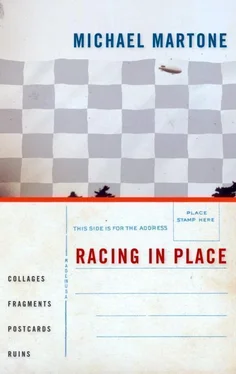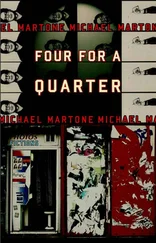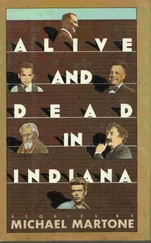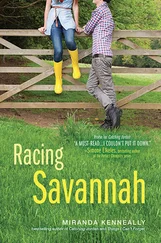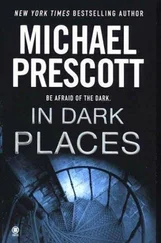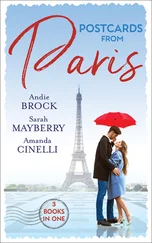3
Z is the other axis of travel. When we travel, we think in terms of going north, going south, even thinking of that as going up or down, the three dimensions of our world constantly flattened to the two of our maps. We laugh at the flat earth notion but we operate happily within it. Altitude, the forgotten coordinate of place, escapes us when latitude and longitude will suffice as we roam our vast world and report on our extended movements around it. Even when a journey considers ascent, to climb a mountain, say, there is the usual flat travel to that place. The scramble to the summit is always described as a sprint, the last burst of energy, an afterthought, really, to the sea-level preparations and the establishment of base camps. The destination of "up" is often too foreign, too strange to be considered travel. The mountains we want to climb could be near Kathmandu, on a spine of granite in the middle of Patagonia, but even these ends of the earth can begin to seem familiar in the way the roofs of the world never do. And that strange and final frontier overhead is not even that far away. A handful of miles, the distance of a daily horizontal commute, takes you to the edge of space. A few hundred feet and you are easily on your way out of this earthbound world.
4
A few steps take you around the observation deck of the Lincoln Tower. It is a kind of trench, this little walkway of a few yards circling the building's ultimate structure, the housing for the revolving searchlight topped by the flagpole and its snapping flag. The solid wall is shoulder-high to an adult. Kids would need to be hoisted up to the shoulders of adults to see out over the wall. The tower is nineteen stories, and was once, when it was built in 1930, the tallest building in the state. It was a scale model of the Empire State Building, finished about the same time. Everything appeared quarter-sized. You can't see down. Seeing down is one of the reasons for traveling up. The looking down is a rare perspective. But the construction of the Lincoln Tower's observation deck makes it impossible to look down on the people walking below, the cars inching along the street. Instead, you must look out from the lookout. See the flat horizon, all 360 degrees of it. I used to walk the trench around the top of the Lincoln Tower gazing in all directions. Such venues often label the vantage points with the number of states, counties, miles your vision can collect. There, the sign reads, is Ohio, but it looks all the same. The green carpet of the canopy of trees, the ground fog of haze, the descending blue sky turning white. Is there a hint of the curve of the earth? Today, the Lincoln Tower is hemmed in by newer, taller buildings. The Fort Wayne Bank Building. The gas company's skyscraper. The phone company's microwave tower. The Lincoln Tower management has tilted up the searchlight's angle so the beam won't paint the windows of the offices yards away. You can see people in those adjacent structures, moving between offices, talking on the phone, eating lunch. They ignore the view mostly, or they have grown used to it. When it gets crowded in the sky, it seems as if everyone is floating. The towers are glass, transparent. You can't see the roots of the buildings. Occasionally, someone will be looking out. A man sitting at his desk, wearing a white shirt and tie, will be looking out at you, on the deck below, looking back at him. Even more rarely, several people will be looking at you simultaneously. They are all on different floors, on different parts of their different floors, a tic-tac-toe pattern. You wave, and they all wave back.
5
For a while there, Hyatt Hotels were notorious for hollowing out their buildings' center, creating the atrium lobbies that reached all the way up to the skylit roofs. The guest rooms emptied out onto terraces of balconies, suspended bridges, floating walkways with transparent floors looking down to the lobby levels, the bar there floating on an island in the middle of a pool. Often, trailing plants, bred to thrive on the filtered light and thin air, planted in the crannies and crags of the canyon wall, launched their viney tendrils into space in cascading falls of pale green foliage. The greenery softened the Escher-like angles of the vaulting geometry, aged the scalloped setbacks into ancient hanging gardens, Mayan ruins uncovered in a jungle. The elevators for reaching the upper floors became kinetic sculpture. The architects removed three walls of the elevators' shafts and walled the cars in glass outlined in strings of tiny lights. The effect, from a distance, was of these opalescent limpid creatures inching up and down a matte black aquarium wall or of these dewy drops of light scaling a slender ascending central pier of gliding gilded cables. These hotels were fortresses, blockhouses turned away from the decaying host cities outside. They were designed as refuges, as destinations in and of themselves. They packaged space. That was the most valuable part of the real estate, after all, not the footprint but the air rights. You bought the absence, the hollow, the nothing, the endless up. For this reason, their entryways were hidden, guarded, disguised. From the streets outside the facades of these cored castles were curtain walls of solid red brick, their outer windows, if they had them, were mere slits. The guest, arriving, made his way past the baffles and tunnels of the entry, finally out into these airy atriums. The heart leaped up. Here, at last, was a city of the future, a city under glass. Here, even gravity was revoked. You floated up to your room, a room wedged onto its own tier of drifting clouds.
6
My father worked as a switchman for the phone company. There was a five-story turret on the roof of the main office building downtown. The turret was the microwave tower. He would sneak me up there. The tower wasn't the familiar lacy truss of criss-crossing struts. This tower had been sheathed, for some reason, with sheets of corrugated metal painted the gray of battleships. Near the top were two decks for the white microwave collectors and transmitters. They looked like ears, of course, listening to the buzz in the air. Housed in this unusual structure they also looked, when I thought about it, like gigantic fungi, mushrooms scalloped on the bark of a tree. They hummed below us when my father took me to the top. In every direction, off in the distance, I could see the other microwave towers, the next nodes of the network. On each the white sails of its antennae cocked back toward our tower. I did think of it as a net, this invisible grid of electromagnetic impulse stitching the distance together. Off to the north, the high ground of my town, was the forest of transmission towers. The television and radio stations, a baker's dozen of the slender spires, were arranged on the horizon. All of them had the pulsing red warning lights, all on their own sequence. The tallest, because it was the tallest, also had a white strobe light. Every few seconds this explosion of light, like the radiation emanating from the tower on the old RKO Radio Picture logo, flashed out its bright bubble of energy. I think we mostly forget about these towers the way we forget about all the wires that circulate above our heads. Electric. Telephonic. The pipelines of data. We are so earthbound. We forget to notice this strata of travel. We actually go places on this plane. There, our voices carry. There, our images stream like choirs of angels on a bright ring of this elevated ether. It is only when you do physically get above this above that you see the airy layer of connection. The towers talk to one another, winking back and forth over the distance, over and over.
7
I like to call home from the tops of tall buildings. There always seem to be banks of pay phones on observation decks. "Guess where I am," I say. My parents never guess. I always say, "I think I can see your house," no matter where I am. I tell them what I can see. What states the sign says I can see. I tell them about the other tall buildings cropping up around me. I tell them about the radio stations on the observation deck. There are often radio stations. I tell them all the things I can see hidden-things hidden from below-on all the surrounding roofs. The water towers, the air conditioners with their slow-turning blades, the housings for the elevators, the skylights, the helipads. Phone calls from the tops of tall buildings are like postcards-compressed, tenuous, transmitted with a view. Thinking of you. And come to think of it, the brain is lodged on the observation floor of the body. Our thoughts peek out like so many tourists gazing from the windows in the Statue of Liberty's crown. Traveling up is a meditation. Being up is reflection. See your face reflected in the window through which you observe. What else to do but look. Look at the looking going on. Observation decks are most often hushed. If they are enclosed, there is no other sensation but sight. I begin to feel I am looking out of my body like I am looking out of the building. The world below begins to fit together as I gaze. I can see the way it fits together. That world becomes like a map; it begins to make sense like a map. To hover over it like this is to simulate the vantage of a map. Traveling up actually changes the scale of my vision. The people look like ants. Why go but to get this other angle on things? My head, yes, in the clouds.
Читать дальше
